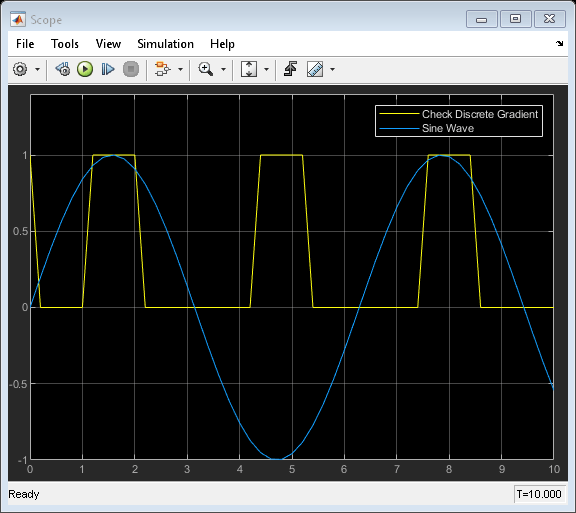Check Discrete Gradient
Check that absolute value of difference between successive samples of discrete signal is less than specified value
- Library:
Simulink / Model Verification
HDL Coder / Model Verification
Description
TheCheck Discrete Gradientblock checks each signal element and determines whether the absolute value of the difference between successive values of the element is less than an specified value. The block then executes an assertion after comparison. You can specify the value of gradient (1by default) by adjusting theMaximum gradientparameter. If the input signal difference is less than the absolute value of theMaximum gradient, the assertion istrue (1)and the block does nothing. If not, the block halts the simulation and returns an error message by default.
Note
To run simulations, the Check Discrete Gradient block requires a fixed-step discrete solver. If another solver is selected, an error prompts.
Ports
Input
Output
Parameters
Model Examples
Block Characteristics
Data Types |
|
Direct Feedthrough |
|
Multidimensional Signals |
|
Variable-Size Signals |
|
Zero-Crossing Detection |
|

